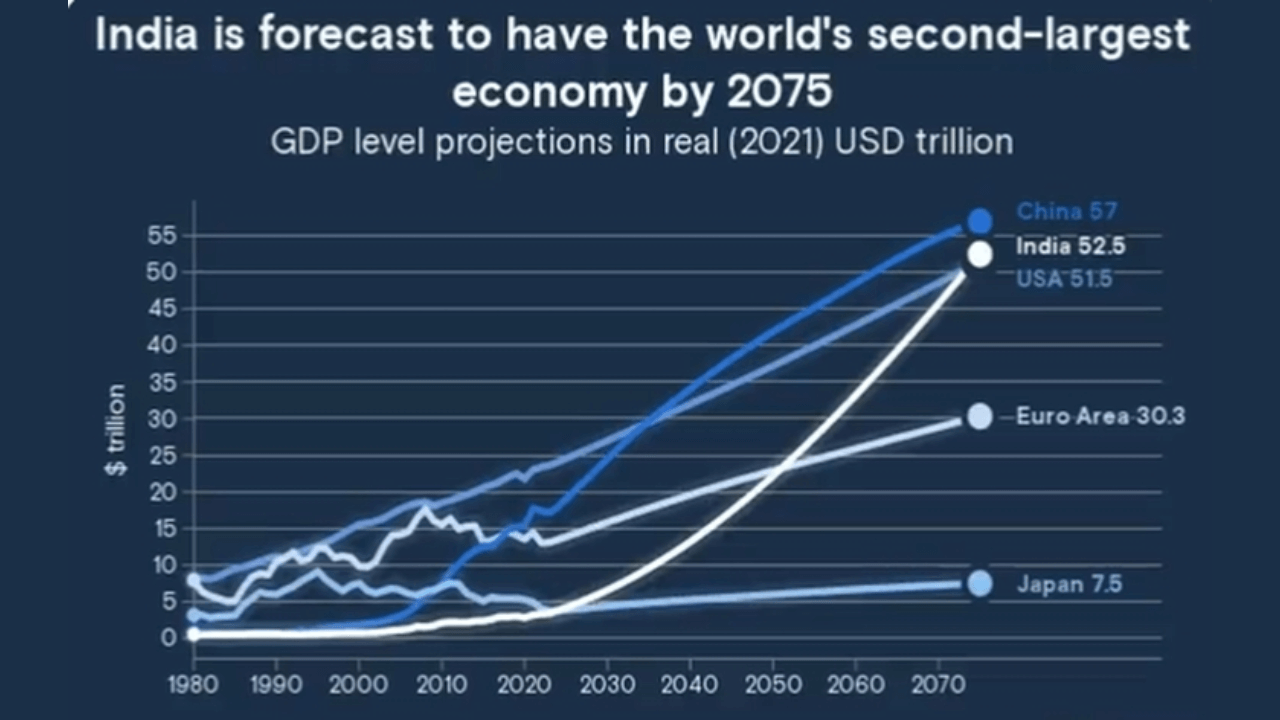According to a report by Goldman Sachs analysts, India is projected to surpass the United States and become the world’s second-largest economy by 2075. The report forecasts India’s GDP to reach $52.5 trillion by that time. Meanwhile, China is expected to overtake the US and become the largest economy by the 2030s.
Population and Progress
India’s rapid population growth and advancements in innovation and technology are driving its economic trajectory. The country’s increased capital investment and rising worker productivity contribute significantly to its economic growth. Additionally, India is expected to have one of the lowest dependency ratios among regional economies.
Boosting the Labor Force

Recognizing the importance of a strong labor force, Goldman Sachs Research emphasizes the need to enhance labor force participation in India. The country aims to strengthen manufacturing capacity, foster growth in the services sector, and invest in infrastructure. The government’s focus on infrastructure development, including roads and railways, supports these efforts.
Technology and Investments
India’s progress in technology and innovation, particularly in the thriving IT industry, plays a pivotal role in driving its economic expansion. The report predicts that revenue in the technology sector will increase by $245 billion by the end of 2023. Capital investment is projected to continue playing a crucial role in India’s future growth.
Risks and Challenges
One significant challenge highlighted in the report is the declining labor force participation rate, particularly among women, over the past 15 years. This poses a hurdle to India’s economic progress. Encouraging more women’s participation in formal employment is crucial for sustainable growth.
India’s Domestic Demand
India’s economy is primarily driven by robust domestic demand, with up to 60% of its growth attributed to domestic consumption and investments. Unlike other regional economies, India relies less on exports for its economic expansion.
Other Predictions
Notably, S&P Global and Morgan Stanley also predict that India will become the world’s third-largest economy by 2030. In the first quarter of the current fiscal year, India’s GDP grew by 6.1% year-on-year, surpassing expectations. The projected full-year growth for the fiscal year is estimated to be 7.2%.
Conclusion
India’s economic outlook is promising, with projections indicating that it will surpass the United States and become the world’s second-largest economy by 2075. To ensure sustained progress, addressing challenges such as the declining labor force participation rate and promoting gender inclusivity in employment is essential. With its focus on technology, investments, and strong domestic demand, India is well-positioned for future economic growth and development.
- 3 August Current Affairs 2023 in English
- MoU Between Subroto Mukerjee Sports and Education Society and All India Football Federation (AIFF) to Promote Football at Grassroot Level
- Dr. Mansukh Mandaviya Delivers Keynote Address at the 13th Indian Organ Donation Day ceremony
- Education Ministry Forms Expert Panel on Anti-Discrimination in Higher Education
- Concerns Arise Over Cheetah Deaths at Kuno National Park

